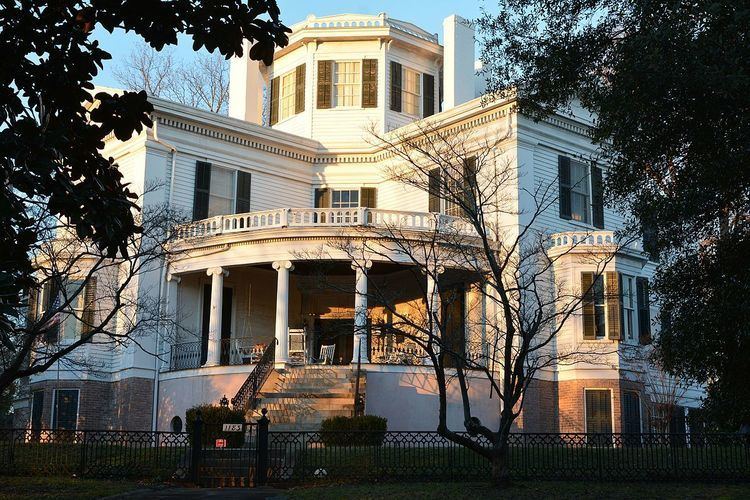NRHP Reference # 74000658; 95000233 Year built 1823 | Boundary increase Added to NRHP 31 December 1974 | |
 | ||
Location Roughly bounded by Riverside Dr., Broadway, Elm, and I-75, (original);Roughly, Adams St. and Linden Ave. S, W and N of Tattnall Sq. and Broadway and Third Sts. between Poplar and Pine Sts. (increase), Macon, Georgia Area 587 acres (238 ha) (original); 91 acres (37 ha) (increase) Architectural style Greek Revival, Late Victorian, Late 19th And 20th Century Revivals (original)Queen Anne, Bungalow/craftsman, Art Deco (increase) | ||
The Macon Historic District is a historic district in Macon, Georgia that was listed on the National Register of Historic Places in 1974 and was expanded in 1995. The original listing covered 587 acres (238 ha) and included 1,050 contributing resources; the increase added 101 acres (41 ha) and 157 contributing resources (of which 10 acres and 10 contributing buildings were already listed on the National Register in the Macon Railroad Industrial District).
Contents
Macon was founded in 1823 in Bibb County on the bank of the Ocmulgee River. Many buildings reflect the 19th-century Greek Revival and Victorian styles of architecture. The district has commercial, government, educational, and residential buildings. The majority of their architectural features have been preserved.
A total of 1047 buildings, two structures, and one object contribute to the Macon Historical District. Several of the contributing properties are separately listed on the NRHP.
History
What is now downtown is part of the original 1823 plan of James Webb. In 1836 Macon chartered the first college in the world to grant degrees only to women - originally named Georgia Female College, it is now called Wesleyan College. The original building is located on what is now College Street. Mercer University moved to the area in 1871. The original residential area is known as "College Hill". While many buildings were constructed after the American Civil War, the district includes one of the largest collections of antebellum Greek Revival architecture in the U.S. These still exist because William T. Sherman bypassed Macon in his March to the Sea.
Contributing buildings
The historic district includes 34 buildings that are separately listed on the National Register:
- Judge Clifford Anderson House
- Captain R.J. Anderson House
- Ambrose Baber House
- Thomas C. Burke House
- Cannonball House
- Christ Episcopal Church
- Cowles House
- Dasher-Stevens House
- Domingos House
- Emerson-Holmes Building
- First Presbyterian Church
- Goodall House
- Grand Opera House
- Green-Poe House
- Hatcher-Groover-Schwartz House
- Holt–Peeler–Snow House
- Johnston-Hay House
- Sidney Lanier Cottage
- Lassiter House
- W. G. Lee Alumni House
- Mercer University Administration Building
- Militia Headquarters Building
- Monroe Street Apartments
- Municipal Auditorium (Macon, Georgia)
- Munroe-Dunlap-Snow House
- Old Macon Library
- Old U.S. Post Office and Federal Building (Macon, Georgia)
- Raines-Carmichael House
- Randolph-Whittle House
- Rock Rogers House
- Slate House
- Solomon-Curd House
- St. Joseph's Catholic Church (Macon, Georgia)
- Willingham-Hill-0'Neal Cottage
Other selected properties include:
Architects involved include:
